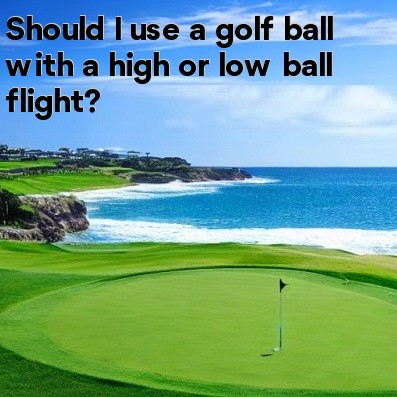
Should I use a golf ball with a high or low ball flight?
Golf is a sport where precision and control are of utmost importance. One factor that can significantly impact your game is the choice of the golf ball. The trajectory or ball flight of the ball is a crucial aspect to consider when selecting a golf ball that suits your style of play.
There are generally two types of ball flights in golf – high and low. Each has its own advantages and disadvantages, and the choice ultimately depends on your personal preference and playing style.
- High Ball Flight:
A high ball flight refers to shots that travel higher in the air and descend at a steeper angle. This type of trajectory is preferred by many professional players because it allows them to control the distance and spin of the ball more effectively. The high ball flight is also advantageous when playing in windy conditions or on courses with soft greens, as it helps the ball land softly and hold its position.
One of the main advantages of a high ball flight is that it provides more carry distance, allowing the ball to travel further through the air. This can be particularly beneficial when playing on longer courses or when trying to carry hazards such as bunkers or water.
However, a high ball flight also has some drawbacks. It may be more difficult to control in terms of direction, as the additional backspin generated by the high trajectory can cause the ball to curve more. Additionally, a high ball flight may not be ideal in certain playing conditions, such as on firm fairways or when trying to keep the ball below tree branches.
- Low Ball Flight:
A low ball flight, on the other hand, refers to shots that travel lower to the ground and have a shallower descent angle. This type of trajectory is generally associated with more control and accuracy. Golfers who prefer a low ball flight often value the ability to hit penetrating shots that can cut through the wind and roll out for additional distance.
A low ball flight can be advantageous in certain situations, such as when playing on firm fairways, in windy conditions, or when trying to keep the ball below obstacles such as tree branches. It can also provide more control around the greens, as the ball will release and roll out less upon landing.
However, a low ball flight may not provide as much carry distance compared to a high ball flight. It may also be more challenging to land the ball softly on greens, particularly when they are firm and fast.
Conclusion:
Ultimately, the decision to use a golf ball with a high or low ball flight depends on your personal preferences, playing style, and the specific conditions you encounter on the golf course. It is a good idea to experiment with different golf balls to find the one that suits your game the best. Consider seeking advice from a golf professional or testing out golf balls with different flight characteristics to make an informed choice.
Keep in mind that your swing technique, club selection, and course conditions are all factors that can influence the trajectory of your shots. As you gain experience and improve your game, you may find that your preference for ball flight changes.





